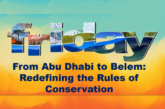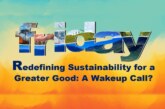
Dr. Arvind Kumar*
The Global Wetland Outlook (GWO) 2025 is poised to make waves with its official launch at the UN Nairobi on July 15, 2025. This year’s theme “Valuing, conserving, restoring and financing wetlands” reflects a growing global recognition that wetlands are not just ecological curiosities, but vital assets at the heart of climate resilience, biodiversity, and sustainable development. As the world faces mounting environmental and economic pressures, the GWO 2025 aims to spotlight the urgent need to invest in wetlands, restore degraded ecosystems, and rethink how we value these natural powerhouses. But have we truly begun to see wetlands for what they are? Wetlands are nature’s transition zones; think marshes, swamps, peatlands, and estuaries where land gently yields to water. These dynamic ecosystems are far more than soggy ground, they’re biodiversity hotspots, hydrological regulators, and powerful climate allies.
As this global momentum builds, it’s important to ground our understanding in what wetlands tangibly offer both to the environment and the economy. Wetlands are vital ecosystems that support nearly 40% of all plant and animal species by providing essential breeding and migratory habitats. They function as natural water purifiers, flood buffers, and critical carbon sinks; storing twice as much carbon per hectare as forests thereby playing a key role in climate regulation. Economically, wetlands deliver immense value, with coastal wetlands estimated at around US $193,845 per hectare per year and inland wetlands at about US $25,682, contributing approximately US $47 trillion annually worldwide through services like fisheries, agriculture, and disaster mitigation. This combination of ecological, environmental, and economic importance makes wetlands indispensable for global sustainability.
India’s wetlands, spanning approximately 16.89 million hectares or 5.12% of the country’s geographic area, are far more than just ecological zones, they are economic engines and climate buffers. Mapped in the 2024 National Wetlands Inventory using high-resolution satellite data, these ecosystems support millions of livelihoods through agriculture, fisheries, and tourism, while providing essential services like water purification, flood control, and groundwater recharge. Their economic impact is tangible, wetlands like Chilika and Bhoj contribute significantly to local incomes, and India’s 91 Ramsar sites, covering over 1.3 million hectares, position the country as Asia’s leader in internationally recognized wetlands.
From Policy Wins to On-Ground Realities
Encouragingly, this recognition is now being matched by policy action; Government initiatives such as the Amrit Sarovar Mission, which has rejuvenated more than 70,000 water bodies. With the launch of the Wetlands Portal and the National Wetland Decadal Change Atlas, have vastly improved the landscape of wetland data, transparency, and restoration planning. Complementing this, the 2017 Wetland (Conservation and Management) Rules of which I had the privilege of serving as a member marked a pivotal step in India’s environmental governance. They have provided stronger legal protection, while a growing emphasis on community-led conservation particularly the integration of indigenous knowledge systems in regions like Rajasthan and Madhya Pradesh, signals a shift toward more resilient, inclusive, and sustainable wetland governance. Together, these developments underscore that wetlands are no longer peripheral to India’s development discourse, they are fast becoming central to its vision for climate-smart, community-driven growth.
Despite growing attention, India’s wetlands continue to walk a tightrope between policy recognition and ecological peril. While flagship initiatives like the Amrit Sarovar Mission have rapidly multiplied the number of rejuvenated water bodies but counting the on-ground reality remains uneven and, at times, contradictory. The recently developed Wetland Health Report Card reveals that nearly 60% of wetlands suffer from poor water quality, 65% have witnessed serious biodiversity loss, and 80% of floodplain wetlands are hydrologically disconnected from their river systems. Add to this the encroachment crisis over 38,000 wetlands recorded as encroached, with more than 1.6% completely unusable and it becomes clear that India’s wetlands are facing an existential threat. Even designated wetlands like Deepor Beel in Assam or Ansupa Lake in Odisha, which should ideally be better protected, are struggling with siltation, pollution, and unregulated inflows.
Adding to this complex picture, while Ramsar site declarations have surged, the geographical distribution remains uneven with the majority of wetland area concentrated in just a few large systems like the Sundarbans and Vembanad-Kol. Smaller and urban wetlands, especially those outside protected zones, often fall through the cracks. For example, Uttar Pradesh has over 16,000 rejuvenated Sarovars, yet nearly 90% of its wetlands remain un-notified, leaving them exposed to degradation. Similarly, Maharashtra lost over 7,000 wetlands between 2011 and 2024, while 25% of Karnataka’s lakes are encroached. Urban wetlands like those in Delhi and Guwahati, once essential for flood control and water recharge, are now either choked by sewage or have disappeared under real estate. Even newly restored sites face risks of becoming ornamental unless backed by strong ecological maintenance and hydrological integrity.
Way Forward
In light of these intertwined ecological, administrative, and spatial challenges, a comprehensive rethink of wetland governance is imperative. To secure the future of India’s wetlands, the path forward must go beyond reactive conservation and instead embrace ecosystem-based adaptation (EbA) as a cornerstone of climate resilience. Wetlands must be integrated into India’s climate action strategies not as standalone biodiversity assets, but as living infrastructure that can absorb shocks from floods, droughts, and rising temperatures. EbA enables wetlands to function as buffers that protect vulnerable communities, enhance groundwater recharge, and stabilize local microclimates. This calls for a “wetland-wise” approach one that recognizes the unique ecological, hydrological, and socio-economic features of each wetland, and tailors management plans accordingly. Ramsar sites like Chilika or Loktak cannot be governed by a one-size-fits-all model; each ecosystem demands bespoke interventions grounded in science and local knowledge.
Equally important is embracing a transversality approach, placing wetlands at the intersection of water, agriculture, energy, livelihoods, health, and urban development. Wetlands should no longer be seen merely as conservation zones but as active contributors to multiple SDGs, from clean water and sanitation (SDG 6) to climate action (SDG 13) and sustainable cities (SDG 11). Cross-sectoral coordination among ministries, alignment of state and central schemes, and mainstreaming wetland values into infrastructure planning are crucial to avoid conflicts between development and ecology. Furthermore, integrating community stewardship and indigenous knowledge systems into planning processes particularly in tribal and rural landscapes can transform wetlands into co-managed commons. Financially, India must explore innovative mechanisms such as payments for ecosystem services (PES), blue carbon markets, and wetland bonds to ensure sustained funding for restoration and maintenance.
The time to act is now, not with fragmented schemes and symbolic tags, but with integrated, adaptive, and forward-thinking governance that recognizes wetlands as climate-smart assets in a rapidly changing world. Only then can India truly lead the world by example by not just valuing its wetlands, but reviving them as engines of resilience and sustainability.
*Editor, Focus Global Reporter






